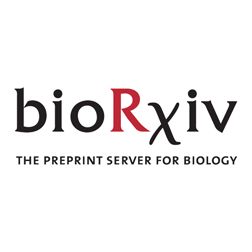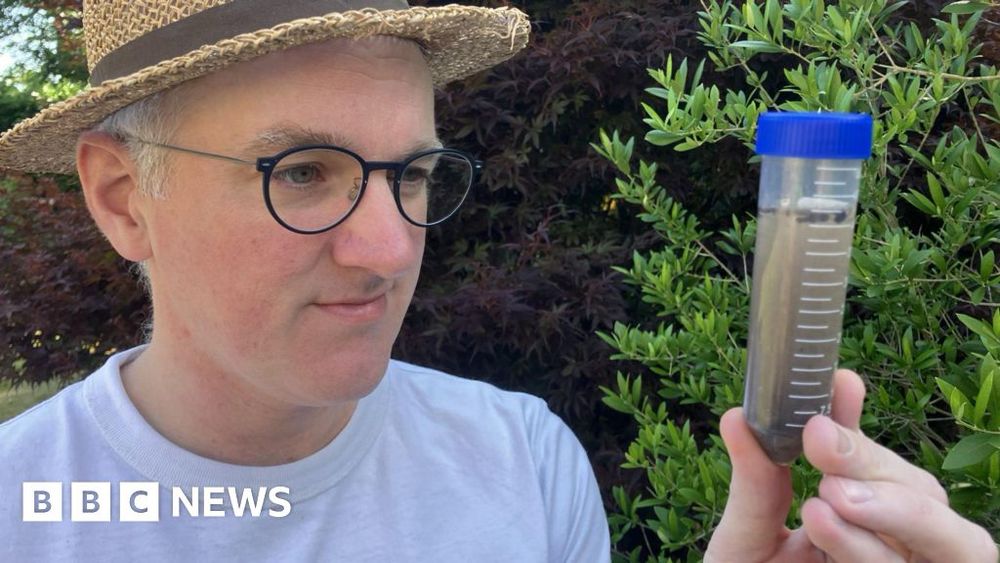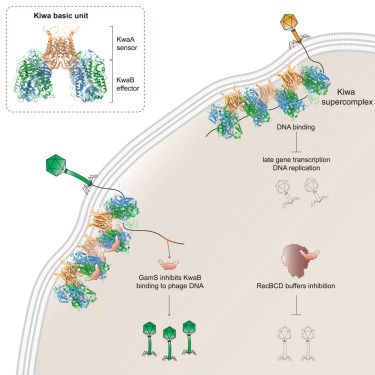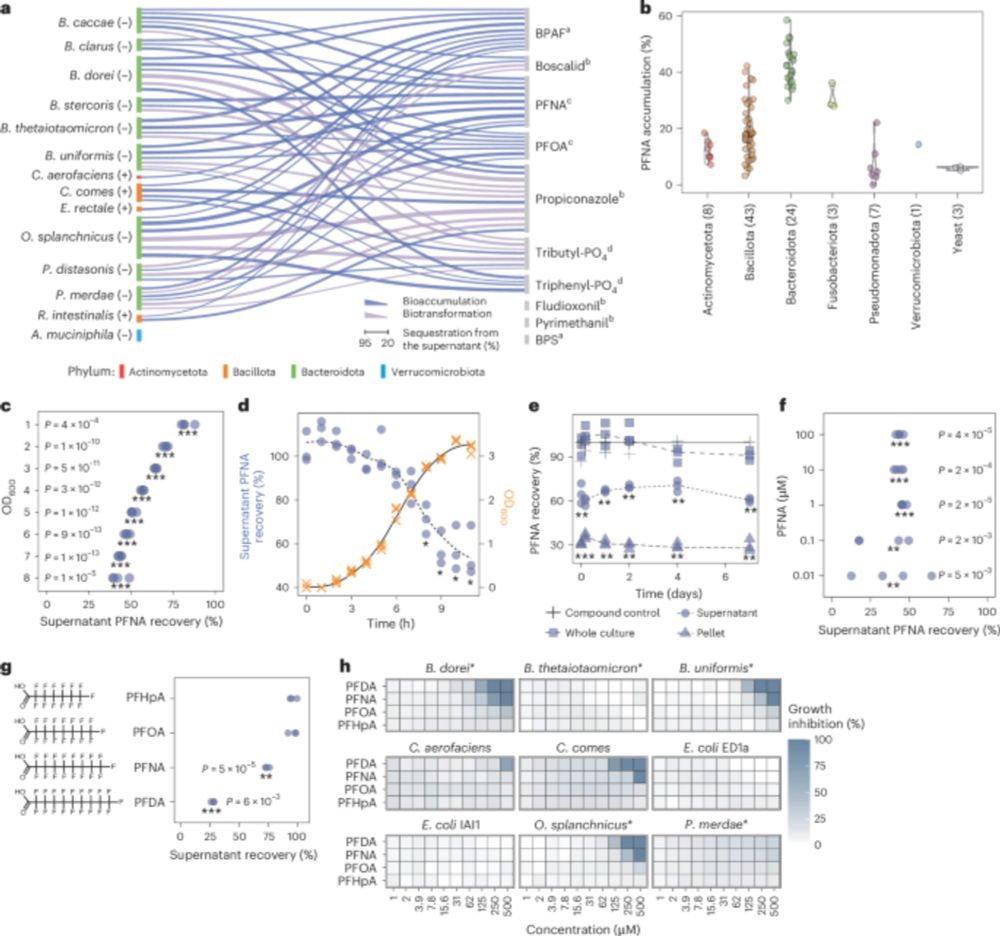
Powering team science to unlock life’s secrets
Four world-class teams awarded major BBSRC sLoLa grants to push the frontiers of discovery in microbiology, photosynthesis, gene regulation and quantum biology.
Really excited to say that we have been awarded a BBSRC sLola! Really looking forward to kick off this project with such a fantastic team! @webberma.bsky.social @overtonlab.bsky.social @bugsinblood.bsky.social Sara Jabbari, Dong-Hyun Kim @imibirmingham.bsky.social www.ukri.org/news/powerin...
18.11.2025 09:48 — 👍 53 🔁 9 💬 9 📌 0
Amazing news, congratulations!
18.11.2025 19:29 — 👍 2 🔁 0 💬 0 📌 0
Paul Nurse describing the main job of a PI
(From ‘The Thinking Game’, 2024)
31.10.2025 08:45 — 👍 178 🔁 53 💬 2 📌 5
the @ukbiofilms.bsky.social I will be advertising several positions for my lab over the next few weeks/months so please do get in touch
23.10.2025 05:49 — 👍 5 🔁 2 💬 0 📌 0

I'm delighted to share that I have joined the School of Biological Sciences at @unisouthampton.bsky.social as Professor in Microbial Biofilms. I'm very excited about this next step in my academic journey and the opportunity to work more closely with all the great scientists at Southampton and
23.10.2025 05:49 — 👍 57 🔁 6 💬 9 📌 0

Antibiotic Resistance and Mechanisms (ARM) Workshop for Researchers 2025 - The British Society for Antimicrobial Chemotherapy
Join us in Birmingham for the annual BSAC #AntibioticResistance & Mechanisms workshop - excellent talks and it’s designed to make conversation & networking between attendees easy #MicroSky bsac.org.uk/antibiotic-r...
21.10.2025 07:59 — 👍 11 🔁 14 💬 1 📌 1

📝 Call for abstracts is open for #ACC2026!
Researchers are invited to share their work on #AMR for short talks or poster presentations.
💡 Themes: child & maternal health, stewardship & access, clinical research, AI in health & more.
⏳ Deadline: 14 Nov 2025, 17:00 GMT
🔗 acc-conference.com#posters
08.10.2025 06:15 — 👍 1 🔁 2 💬 0 📌 0
Now published! www.nature.com/articles/s41...
Very nice collaboration with Hoogenboom ( @ucl.ac.uk ) and Bonev ( @uniofnottingham.bsky.social ) labs.
29.09.2025 14:24 — 👍 44 🔁 24 💬 1 📌 0

Delighted to share that Lyuboslava Harkova passed her PhD viva today with only minor corrections. Her thesis focused on virulence regulation in Acinetobacter baumannii. Special thanks to Prof Jake Malone and Dr Ayca Sayi Yazgan for being fantastic examiners
01.10.2025 22:48 — 👍 3 🔁 1 💬 0 📌 0

Delighted to share that @evgeniamaslova.bsky.social passed her PhD viva today with only minor corrections. Her project focused on novel models to study wound infection. Thank you to the @nc3rs.bsky.social for funding her PhD and @flamycain.bsky.social and Anthony Tsolaki for being superb examiners.
29.09.2025 22:40 — 👍 7 🔁 1 💬 1 📌 1
Massive congratulations!
16.09.2025 09:48 — 👍 2 🔁 0 💬 1 📌 0
Stories - Microbiome Innovation Centre - University of Liverpool
Delighted to announce the launch of the BBSRC-funded UK-wide microbiome innovation network Microbiome-Net.
I'm looking forward to representing and furthering the East Midlands Microbiome Research Network's contributions to research, innovation and policy.
www.liverpool.ac.uk/microbiome-i...
13.09.2025 06:30 — 👍 23 🔁 7 💬 0 📌 1

Uridine as a potentiator of aminoglycosides through activation of carbohydrate transporters
Uridine boosts aminoglycoside treatment efficiency against antibiotic-susceptible as well as antibiotic-resistant E. coli strains.
So excited our antibiotic potentiation story is out 🤩 Led by the extraordinary @manonlang.bsky.social with @fox-science.bsky.social & @amazeld.bsky.social +amazing collaborators @immunobladder.bsky.social @imaneelmeouche.bsky.social 🦠 We believe it can make a difference in #AMR infections!
06.09.2025 09:35 — 👍 98 🔁 47 💬 7 📌 4

Sub-cellular chemical mapping in bacteria using correlated cryogenic electron and mass spectrometry imaging
Congrats Hannah Ochner and authors on this important paper! Strong collaboration with @kiranrpatil.bsky.social
www.biorxiv.org/cgi/content/...
@mrclmb.bsky.social @wellcometrust.bsky.social
31.08.2025 18:44 — 👍 142 🔁 62 💬 3 📌 4
Check out the first preprint from our lab describing a direct molecular cross-talk between (p)ppGpp and c-di-GMP nucleotide messengers! Great work from first-author Corentin Jaboulay who was a postdoc in our lab, and great collaborations! @mmsb-lyon.bsky.social @cnrsbiologie.bsky.social
24.08.2025 07:48 — 👍 33 🔁 15 💬 2 📌 3
New paper out!
20.08.2025 15:00 — 👍 22 🔁 8 💬 0 📌 0

A family of linear plasmid phages that detect a quorum-sensing autoinducer exists in multiple bacterial species
Temperate phages oscillate between lysogeny, a genomic maintenance state within a bacterial host, and lytic replication, in which the host is killed, and newly made phage particles are released. Successful transmission to new hosts requires that temperate phages appropriately time their transitions from lysogeny to lysis. It is well understood that temperate phages trigger lysis upon detection of host cell stress. Understanding of the breadth of cues that induce lysis expanded with the discovery of phages carrying quorum-sensing receptor genes that promote lytic induction exclusively at high host cell density. Bacteria engage in a cell-cell communication process called quorum sensing, which relies on the production, release, accumulation, and group-wide detection of extracellular signal molecules called autoinducers. Bacteria use quorum sensing to monitor changes in population density and synchronize collective behaviors. The temperate phage VP882 (jVP882) encodes VqmAj – a homolog of its host’s quorum-sensing receptor/transcription factor VqmA. VqmAj allows jVP882 to detect the accumulation of the host autoinducer called DPO. Presumably, launching the lytic induction program at high host cell density maximizes jVP882 transmission to new hosts. Here, by mining sequence databases for linear plasmid phages, we identify VP882-like phages in multiple DPO-producing bacterial species isolated at diverse times and geographic locations. We show that the VqmAj homologs can indeed detect DPO and, in response, activate the lytic pathway. Our observation indicates that jVP882 is a member of a large family of globally-dispersed quorum-sensing-responsive temperate phages.
A family of linear plasmid phages that detect a quorum-sensing autoinducer exists in multiple bacterial species | bioRxiv https://www.biorxiv.org/content/10.1101/2025.07.30.667625v1?rss=1
31.07.2025 01:23 — 👍 22 🔁 10 💬 0 📌 1
Research Associate - Microbial Metabolomic
Research Associate - Microbial Metabolomic
*JOB AD*: interested in doing a postdoc in microbial metabolomics? Passionate about natural products mass spec?
Come join the group! Informal enquires welcome!
Closing Date: 19 August 2025
jobs.ncl.ac.uk/job/Newcastl...
22.07.2025 14:32 — 👍 26 🔁 31 💬 0 📌 4

Phage therapy: I found a bacteria-eating virus in my loo
It's hoped phages could give us new ways of treating infections which are immune to antibiotics.
We’re excited to bring the @phagecollection.bsky.social to #SummerScience at @royalsociety.org next week.
Big thanks to James Gallagher for covering the project in the BBC
Read more here: www.bbc.com/news/article...
Hope to see some of you there! #PhageTherapy #AMR #OpenScience
28.06.2025 10:02 — 👍 16 🔁 9 💬 1 📌 1
PhD student at the School of Life Sciences, University of Warwick || AMR and Biofilm infections || Black in Micro || Ancientbiotics || Freya Harrison’s lab
Editor in Chief of Microbiology, the flagship journal of the Microbiology Society
Postdoc at the University of Manchester, with Prof. Mike Brockhurst. Understanding and predicting the evolution of antimicrobial resistance in clinical Pseudomonas 🔬🦠
Lecturer in Microbiology at the University of Reading. Interested in uncovering how bacteria fight it out and using those strategies against them
Interdisciplinary Microbiology
University of Southampton
Professor of Glycobiology, University of Southampton
Professor of Skeletal & Developmental Biology
Director Knowledge Exchange & Enterprise sotonbiosciences.bsky.social
CoDirector http://cdfuos.bsky.social
https://www.datascienceforhealthequity.com/themes/musculoskeletal-health
Neuroscientist, in love with microglia (and cycling). Views are my own
I'm an Associate Professor of Evolution and Paleobiology at the Gostling Evolution and Paleobiology Lab, the University of Southampton.
Birds, Dinosaurs, Mammals, 'Animals', Evolution and Paleobiology, Placentology
Associate Professor in the School of Biological Sciences at the University of Southampton, head chef at https://GlycoShape.org, Salem's butler, fucose fanatic #glycotime everyday! She/Her
Evolutionary Ecology via computer vision, machine learning, geochemistry, maths, stats and systematics in Ocean and Earth Science, University of Southampton. https://tomezard.github.io/
Associate Professor @ University of Southampton.
Morphological Evolution, Fossils, EvoDevo, Biomineralization, Echinoderms
🇩🇿 🇫🇷 cell & developmental biologist
associate professor at @unisouthampton.bsky.social
stem cells, cell division, cell polarity, mammary organogenesis, breast cancer and microscopy
Molecular plant biologist at sotonbiosciences.bsky.social, Director of SoCoBio DTP. Views are my own.
https://www.southampton.ac.uk/people/5wyk8h/professor-matthew-terry
Cell Biologist, Univ of Southampton
Organelle & Protein quality control
https://tumbarellolab.com/
The BBSRC funded South Coast Biosciences Doctoral Training Partnership brings together the Universities of Southampton, Kent, Sussex and Portsmouth and NIAB at East Malling





















